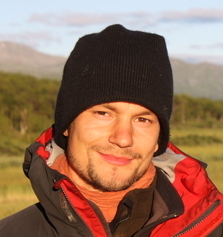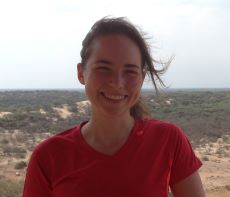Project Seminar for Bachelorstudiengang Geographie and for Lehramtsstudium Erdkunde at Philipps Universität Marburg
Overview
In this seminar you will learn to work with ground radar images. At the beginning you will learn about ground radar theory and different radar types and applications. The following learning goals are to interpret and analyse radar images. You will also learn how to extract relevant information from 2D ground radar images and create results in 3D. You will be working with recent fieldwork data from Ethiopia with focus on the burrow structures of Giant Molerats (Tachyoryctes macrocephalus). For your final assignment you will formulate your own research questions and analyse a self-chosen data set in R. The course materials will be provided in English. The course language is German. No prior ground radar knowledge is necessary.
Hybrid format
The course is planned as classroom teaching experience. Due to the ongoing Corona-Virus SARS-CoV-2 pandemic this course will be taught in a “Hybrid”-concept and trying to include session where students teacher are partly meeting at University. Depending on current situation and regulations. Please see the FAQ for more information about the course concept and access to the digital classroom.
General information
Maximum Number of participants: 20
Technical requirements : Computer and stable Internet connection
Please contact us if you do not have the technical requirements to join the digital course!
First session
The first session will take place online at the web platform BBB on Wednesday 11.11.2020, 10:15 (please join the meeting 15 minutes before the start of the session). The link to the session will be provided shortly here: Link to Ilias Sytem (only accessible with a student account of the University of Marburg)
Course times
Wednesdays, 10:15 to 13:45
13 class meetings
First lesson 11.11.2020 to 24.02.2021
![]() Christmas break from 19.12.2020-09.01.2021
Christmas break from 19.12.2020-09.01.2021 ![]()
Intended learning outcomes
At the end of this course you should be able to
- utilize R to process, analyse and interpret ground radar images
- basics of radar theory and history
- implement data analysis workflows using tailored R Scripts along with readily available functions from third-party R packages
- critically evaluate your results
- apply your learned new knowledge and skills to self-chosen work project
Syllabus
| Session | Topic | Content |
|---|---|---|
| 01 | Theory and History | Organizational matters, course introduction, mutual expectations, hybrid course setup |
| 02 | Theoretical background | A brief history, Who uses radar data, how does ground radar work |
| 03 | Study region and data | Study area and data: Bale Mountains |
| 04 | Inside R | Data and information, data types, object types |
| 05 | Processing data | The radar basics - get to know your data, storing results, calibrating |
| 06 | Analyse your data | Interpret sample data,setting GPS, hyperbola |
| Christmas Break | ||
| 07 | Pre-processing and Workflow | Working with 2.5D data: pre-processing and Workflow |
| 08 | More R basics | Loops and batch processing of multiple files |
| 09 | Timeslices | Working with 2.5D data: slice view and plotting in 2D |
| 10 | 3D and Visualization | Transform to 3D, visualization and interpretation of results |
| 11 | Projects | Discussion of project ideas, designing a case study |
| 12 | Proprietary software | Proprietary software and other applications |
| 13 | Wrap up | Final discussion, evaluation, free work time for finalizing projects |
Deliverables
The graded course certificate will be based on an individual assignment (“Hausarbeit”), which builds upon the processing workflow established during the course.
Preparation and prerequisites
Basic knowledge of R and of handling spatial data is beneficial, but not required.

